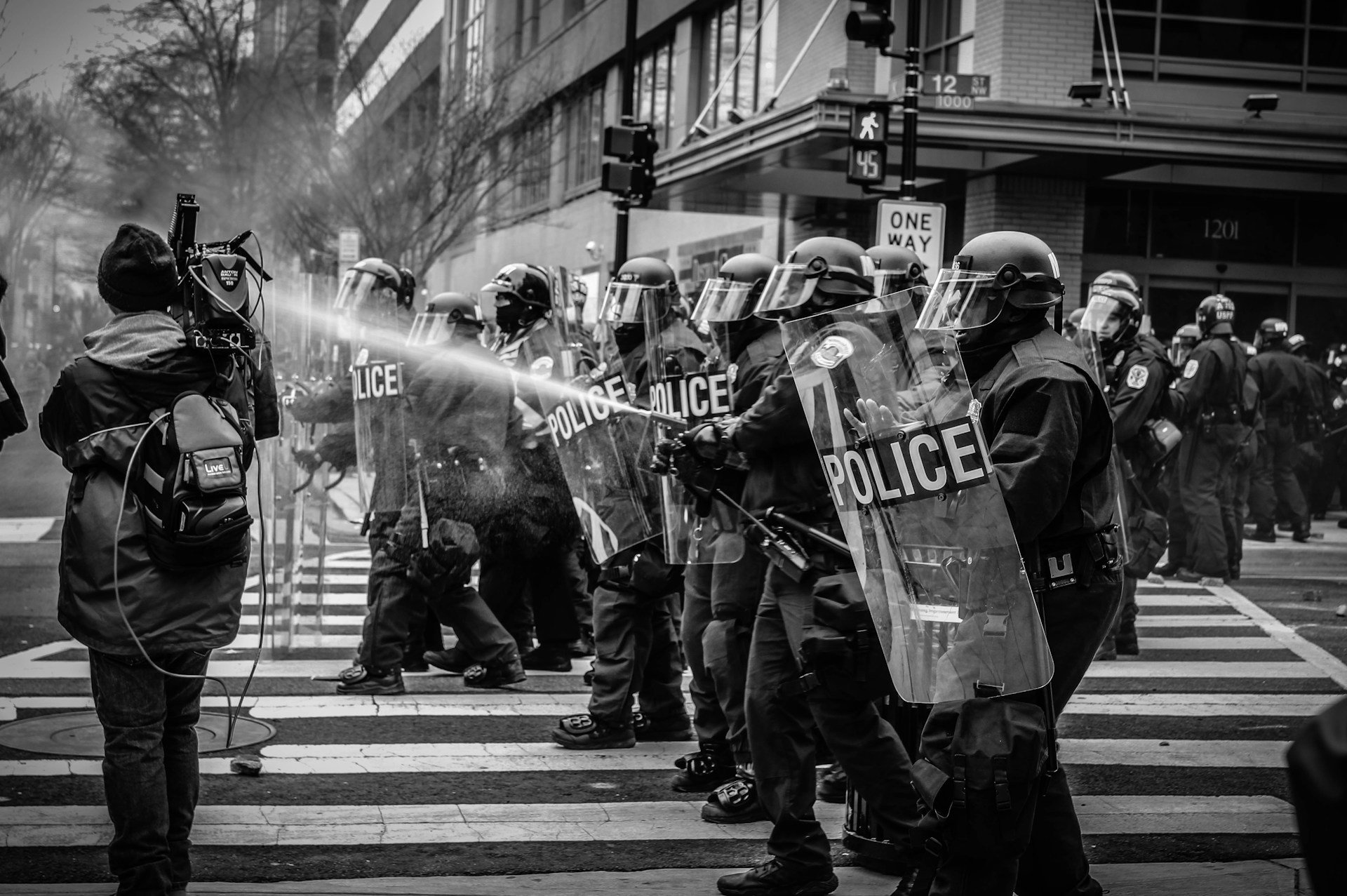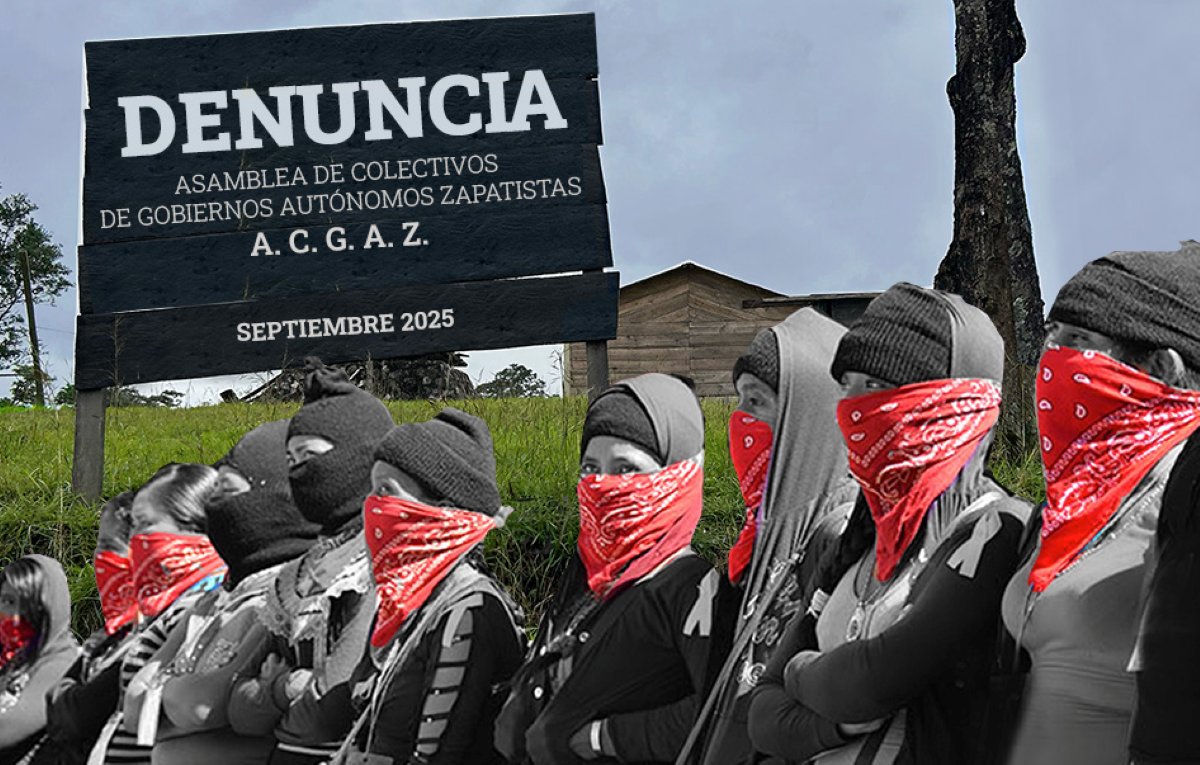Filed under: Anarchist Movement, Video

The Cinema Committee presents a video proposal to form communes.
In August of 2018, multiple demonstrations were organized across the United States against the contemporary fascist movement in Portland, Berkeley, Charlottesville, Washington DC, and several other cities. Unlike previous mobilizations, there were no deaths and very little physical violence. In every case, the fascists were greatly outnumbered by anti-fascists but protected at all times by a wall of armed riot police. This is the same treatment fascists have long received in places like Germany and the UK, but unlike those European countries, local police forces have far more autonomy in the United States. The events of early August have shown that the majority of police forces in the US will side with literal fascists over the numerous people who oppose them. As our European comrades know full-well, this type of state-enforced stalemate can last for years with no considerable advancement towards victory. In this regard, the state always uses fascists as a distraction from the grander and more pressing problems we face: the collapsing bio-sphere, unrestrained capitalist exploitation, mass-incarceration, and providing material resources for our immediate communities.
While it’s absolutely necessary to combat the resurgent fascist movement, we must do so from a place of autonomy, not capitalist dependency. The majority of rebels in the US are bound by the constraints of work, the economy, and debt, effectively preventing them from engaging in the large-scale struggle necessary to topple the system. To help liberate all of our potential comrades, we must establish free areas or communes where these capitalist constraints no longer have power. Much intellectual energy has been spent debating whether or not one can actually leave the economy, but such a conversation is pointless. What is certain is that we must get as far away from the economy as possible in order to free the most time for the most people. Purity can be left to the priests, for we’ll have no need for it in our future. The majority of the US population (roughly 45%) already lives against the state in order to survive and almost none of them have any qualms about exploiting every available systemic loophole to stay alive. The leap from survival-under-capital to survival-within-a-commune is not difficult to comprehend for most people. All that’s lacking are the communes.
At the height of its autonomous power, the ZAD land occupation in northern France established a stone house called La Gree specifically for immigrants, runaways, and those recovering from drug addiction. Like the Healing Center at the Unist’ot’en Camp in so-called British Columbia, this stone house was meant to heal people from the ravages of this economic system. While the food grown on the ZAD or the salmon jarred in Unist’ot’en are vital elements to autonomous survival, these healing centers are perhaps the most powerful element in the entire mixture. Within the safety of the woods, people can be reborn from the ruins of their metropolitan lives and learn how create the world of their dreams. Once their spirits are healed and their cracks mended, the raw struggle opens up in all its immensity, revealing ones previous paralysis to be nothing more than the daily traumas inflicted by capitalism. This vital element of the struggle is constantly forgotten, especially in the smoldering ruins of contemporary state-Marxism.
After the collapse of the USSR, the best of international Marxism gathered its forces in the jungles of Chiapas and launched an insurrection in 1994. For the past twenty-four years, the Zapatista Army of National Liberation (EZLN) has held onto a massive area of jungle in southern Mexico and severed it from the global economy. They were able to accomplish this feat only after humbly asking the Mayan indigenous tribes to help them understand what they were missing in their conception of insurrection.
Given the current state of Nicaragua, Venezuela, Cuba, North Korea, Nepal, and China, it’s clear that the Zapatistas discovered the only path towards anything that might be called communism, and they did so in spite of Karl Marx, not because of him. The indigenous mythologies of the Mayan tribes have far more influence on the EZLN than the teachings of factory-owning Engels, and the Zone in the Chiapas is objective proof that communism has nothing to do with its alleged prophets. The “Zona Zapatista” remains the largest, brightest, and most promising star on the horizon, yet the EZLN deliver the same advice to every one of our comrades who’ve ever visit their territory: you may study our struggle, you may learn our history and our methods, but your struggle will resemble ours only in spirit, for each land has its own story and will create its own resistance.
In the contemporary United States, the fascist movement has been mobilizing anti-communist slogans in order to recruit new members. While some of this propaganda is meant to capitalize off four decades of Cold War conditioning, the bulk of this demonization serves the same purpose it did in the 1920s: to create a controlled binary between state-capitalism and state-communism. However menacing this propaganda might appear, it will never achieve its prior successes now that the USSR is no longer the secret leader of all evil.
Unfortunately for every anarchist living in the US, the resurgent democratic-socialist movement is now eagerly flocking to every leftist candidate for the Democratic Party, making clear they are still very much committed to state-socialism and electoral politics, a strategy with no future. Contemporary academia is also littered with Marxists who are constantly being pointed at by fascists as proof of elaborate conspiracies in elite institutions, an assertion that’s constantly bolstered with each successive scandal. Marxists have long advocated infiltrating bourgeois institutions to gain institutional power, and in this regard they have been much more successful than anarchists, who oppose such methods and rarely engage in them. This infiltration of the academy has unfortunately yielded very few results over the past decade, especially now that the entire world’s literally burning, and it remains unclear what further purpose these institutions can serve given their relationships to the state, the military, and capitalism.
With the planet now directly attacking capitalism using forest fires and hurricanes, the anarchist movement must begin building a better world immediately. All of the conditions that prevented our victory in the past have just been removed by the earth itself. A century of capitalism and communism have led us to this infernal landscape, and both state-philosophies are now thoroughly discredited. With the mass-proliferation of homeless encampments across the land, it won’t be difficult to find eager participants for future land expropriations and commune building. Buying land doesn’t invalidate a commune’s existence, but it also doesn’t ensure people will live there. Only a collective of individuals in struggle can breath the necessary life into these hubs and make them function with purpose.
With the current farming season creeping towards its end, we encourage everyone to plan their communes for the spring planting season of 2019. Nothing secures real autonomy better than a bountiful harvest that will actually feed more than a few people for longer than a couple weeks. A single group doesn’t need to spearhead this commune building effort or take responsibility for its proliferation, given that it’s already happening out of sheer necessity, and each successive commune will reinforce the other. Once these hubs of desertion come into being, taking action against local concerns becomes easier and emerges from a place of strength, not dependency.
There are many commune-building currents in the contemporary United States and some have even survived since the anarchist heyday of the late-1800s. Other currents emerged in the 1960s and 1970s and continue to this day in this cities and rural countryside, although most of them were never anarchist. Indigenous land occupation has a long history in North America, its most prominent example being the Oka Crisis in 1990. Since then, the Unist’ot’en Camp in so-called British Columbia has served as the brightest beacon for the future of land struggle. After erecting several wooden buildings in the path of an oil pipeline, the Unist’ot’en Clan has maintained a checkpoint preventing the Crown and its RCMP from entering their territory since 2010. The fierce resistance demonstrated at Standing Rock in 2016 further elaborated the militant conception of commune building and land defense in North America, bringing contemporary rebels one step closer to seizing the land.
Recently, the Tiny House Warriors of the Secwepemc Tribe have built multiple mobile tiny-houses to place in the path of a proposed pipeline through so-called British Columbia. They are currently inhabiting the portion of their ancestral territory where the state plans to build a work camp. Further to the southwest, their indigenous allies at Camp Cloud were recently evicted at the proposed pipeline terminus in Burnaby.
In addition to these indigenous currents (which constitute the majority), the ZAD in northern France has certainly spread its methods into the United States. Publications like the recent book Inhabit and the Woodbine hub in Queens, New York serve as one the many entry points to this terrain of struggle, just as the famous text Desert and the many works of the Invisible Committee still serve as the perennial touchstones of our movement in the United States. Outside of these words, texts, hubs, and occupations, there are hundreds of anarchists currently sitting around fire-pits in homeless encampments spreading their hobo-tales that keep the dream of anarchism alive among the reserve army of the unemployed.
The anarchist movement has grown massive in the past three years and we mustn’t let the energy fizzle away in the doomed back and forth between the police and fascists. We must oppose them at every step, but we can’t keep going to work for the boss once the battle’s over. At some point in the very near future, the world will forced to give up capitalism whether it wants to or not. The moment when this shift actually occurs isn’t completely in our hands, but our collective survival certainly is within our grasp. If we don’t build a better world now, we’ll be that much more ill-prepared for when the first large-scale interruptions hit the global system and render all economic theories meaningless.
We mustn’t repeat the mistakes of the past and follow the state-communists off the cliff like blind lemmings out of sheer solidarity, given how they’ve betrayed anarchists in the past and present. Instead of defending state-socialism on the streets, we need to live anarchism in our communes and illustrate how desirable autonomy truly is. We have no wish to sell-out the well-meaning socialists and communists to the murderous fascists, but we also have no wish to humor their idiocy and we must manifest the world inside our hearts with nails, shovels, and pole beans, not a flawless CV. Unlike the perpetual mobilizations towards the ballot box that yield fists-full of sand, a group of five can build a house in four days and spend a week preparing a farm-plot that will feed a hundred people. This logic is no different than the logic of direct action. Whether it be a with molotov or a shovel, our methods always get the goods. No one can deny this any longer.
We hope this inordinately long communication finds you well and already viewing thinking our words are redundant. Good luck in all your future efforts. As we finish this essay, the ZAD prepares for a week of skill-shares, celebration, and reconstructions. Pay attention to what happens in the coming days, given our future will most likely resembles the ZADists. This is our world now. Welcome to hell! All power to the communes! Capitalism well end anyway. You decide when!
With endless love,
The Editors





